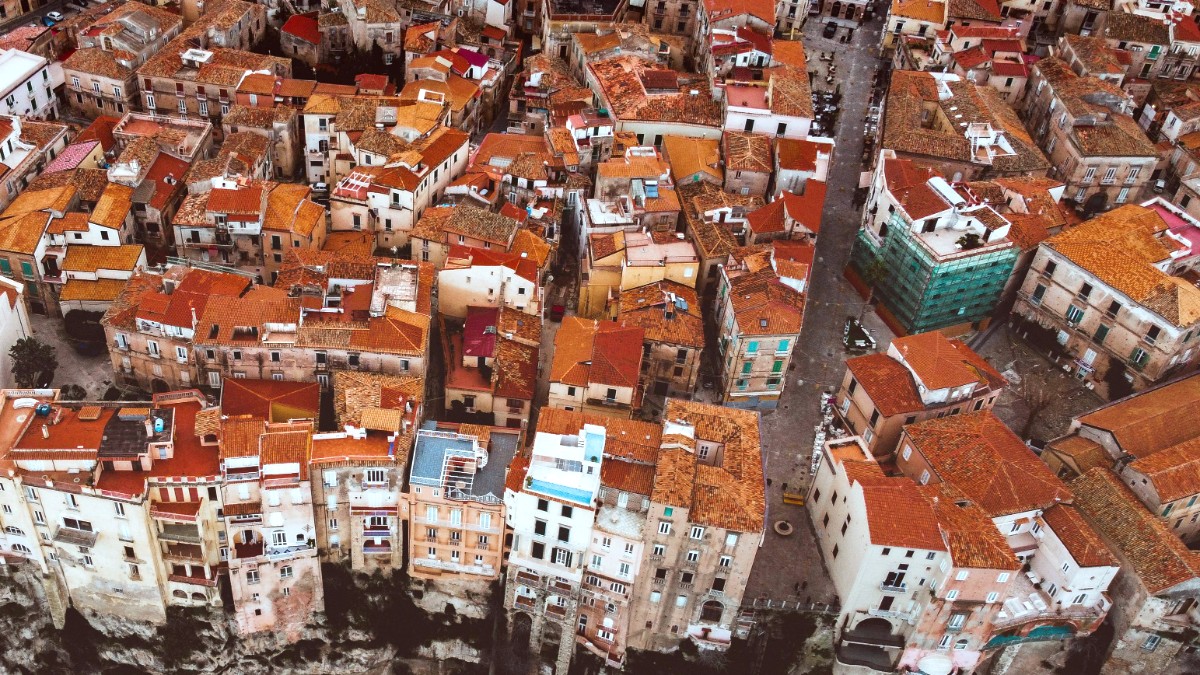
Italy
Pizzo Calabro (approx. 30 km north): A charming coastal town known for "Tartufo di Pizzo" ice cream and the Aragonese Castle of Murat. Visit the unique Piedigrotta Church.
Scilla (approx. 50 km south): A picturesque fishing village with the enchanting Chianalea district, "Venice of the South." Explore Ruffo Castle for panoramic views.
Capo Vaticano (approx. 10 km south): A stunning headland with panoramic viewpoints and beautiful coves. Grotticelle Beach has clear waters and white sand.
Vibo Valentia (approx. 30 km inland): The provincial capital. It features a Norman-Swabian castle, now an archaeological museum. A glimpse into local administrative life.
Reggio Calabria (approx. 90 km south): Largest city in Calabria, primarily for the National Archaeological Museum. It houses the Riace Bronzes, magnificent Greek warrior statues.
Calabria's rugged interior and stunning coastline present opportunities for natural escapes.
Rugged mountains, dense forests, and traditional mountain villages. A destination for hiking and nature walks.
The "Costa degli Dei" has numerous protected marine areas and stretches of pristine coastline.
Explore secluded beaches, mountainous Aspromonte, or rural areas with olive groves and citrus orchards.
The "Coast of the Gods" features dramatic cliffs, hidden coves, and crystal-clear waters.
Beyond Tropea's main beaches, numerous secluded beaches stretch south toward Capo Vaticano. Many are only accessible by boat or by walking steep paths.
Extend your cultural exploration beyond Tropea to nearby historical and traditional sites.
Historically significant as the imprisonment site of Joachim Murat, Napoleon's brother-in-law. Now houses a museum.
A historic fortress on a rocky promontory with panoramic sea views. A defense point for centuries.
An important archaeological site with ruins of an ancient Greek city. A longer day trip by car or train.
Explore small, traditional villages inland from Tropea for a taste of authentic Calabrian rural life. These villages often maintain ancient customs and a slower pace.
The Sanctuary of Santa Maria dell'Isola in Tropea is a significant pilgrimage site. Other smaller religious sites in nearby towns hold local spiritual importance.
Consider extending your trip beyond Tropea to explore more of Southern Italy and its islands.
A multi-day trip (1-2 nights) opens the door for in-depth exploration of islands like Lipari, Vulcano, and an unique night hike on Stromboli.
Messina is a short ferry ride across the Strait. Sicily presents a rich blend of history, culture, and cuisine, a distinct island perspective.
Head north to Matera in Basilicata, an ancient cave city and an UNESCO World Heritage site. Its unique Sassi districts present an unparalleled historical experience.
Ferries to the Aeolian Islands depart from Tropea (seasonal), Vibo Valentia, or Reggio Calabria. Sicily connections are via train and ferry.
Plan extended routes for immersion in Southern Italy's diverse landscapes and cultures.
Combine Tropea with Pizzo, Scilla, and a few days exploring hidden beaches towards Capo Vaticano.
Spend a week in Calabria then take a ferry for 2-3 days exploring the Aeolian Islands.
Start in Tropea, head north to Matera, perhaps continuing to Puglia or westward to the Amalfi Coast.